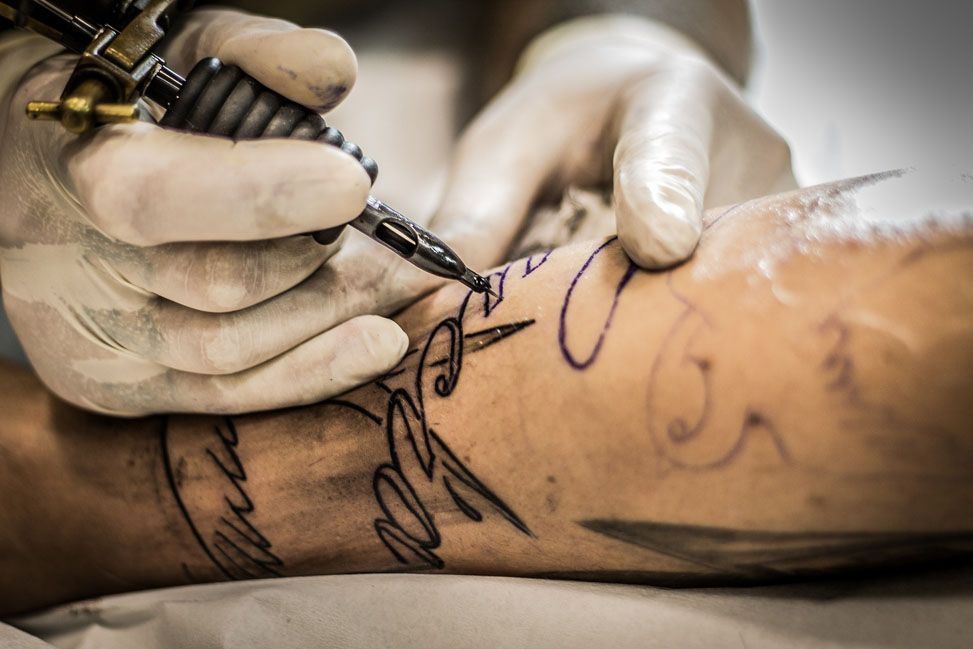Tattoos hold a significant place in the intricate tapestry of Chinese culture, weaving through millennia of history, tradition, and societal evolution. Embedded with symbolism, cultural significance, and artistic expression, tattoos in Chinese culture have transcended mere body adornment to become emblematic of identity, heritage, and personal narrative. In exploring the rich tapestry of tattoos within Chinese society, one discovers a nuanced interplay between ancient customs and contemporary interpretations, reflecting the dynamic nature of cultural expression. From the ritualistic practices of ancient civilizations to modern interpretations of self-expression, the journey of tattoos in Chinese culture offers a captivating lens through which to explore the intersections of tradition, symbolism, and individuality. This essay delves into the multifaceted world of tattoos in Chinese culture, tracing their historical roots, examining their evolving significance, and contemplating their enduring relevance in today’s society.
Chinese Word for Tattoo
- 纹身 (wén shēn): This is the most common and widely accepted way to say “tattoo” in Chinese. It literally translates to “decorated body.”
- 刺青 (cì qīng): This is a more traditional term that literally translates to “puncture blue-green.” It refers to the traditional method of tattooing using ink made from plants. While still understood, 纹身 (wén shēn) is the preferred term in modern Chinese.
The origin of tattoo in China
he origin of tattooing in China dates back thousands of years, with evidence suggesting its presence in ancient cultures and civilizations. Tattooing practices in China have been documented as far back as the Neolithic period, with archaeological discoveries revealing mummified remains adorned with intricate tattoo designs.
During the Shang Dynasty (1600–1046 BCE), tattooing was prevalent among certain tribal groups. These tattoos often held symbolic significance, representing aspects of identity, social status, and spiritual beliefs. They were used to mark individuals as members of specific tribes or clans, as well as to denote achievements, accomplishments, or significant life events.
Tattoos were also associated with shamanistic rituals and religious practices during this time. Shamans, or spiritual leaders, were believed to possess supernatural powers, and tattoos served as a means of communication with the spirit world or as protective symbols against malevolent forces.
Throughout Chinese history, tattooing continued to evolve and adapt, reflecting changes in cultural norms, social structures, and artistic preferences. During the Han Dynasty (206 BCE–220 CE), tattooing gained popularity among certain segments of society, including soldiers, criminals, and entertainers. Tattoos were used to denote military rank, mark criminals as punishment, or adorn performers for theatrical purposes.
Despite periods of fluctuation in popularity and social acceptance, tattooing remained a part of Chinese culture, albeit often relegated to the fringes of society. It wasn’t until the late 20th and early 21st centuries that tattoos experienced a resurgence in China, fueled by globalization, cultural exchange, and shifting attitudes towards self-expression.
Cultural Symbolism and Meaning Behind Chinese Tattoos
Chinese tattoos are not only aesthetically captivating but also deeply rooted in cultural symbolism and meaning. Here are some significant symbols and their meanings behind Chinese tattoos:
1. Dragons (龙 – lóng): Dragons are revered creatures in Chinese culture, symbolizing power, strength, and good fortune. They are often associated with the emperor and represent imperial authority and protection. Dragon tattoos signify bravery, wisdom, and auspiciousness.
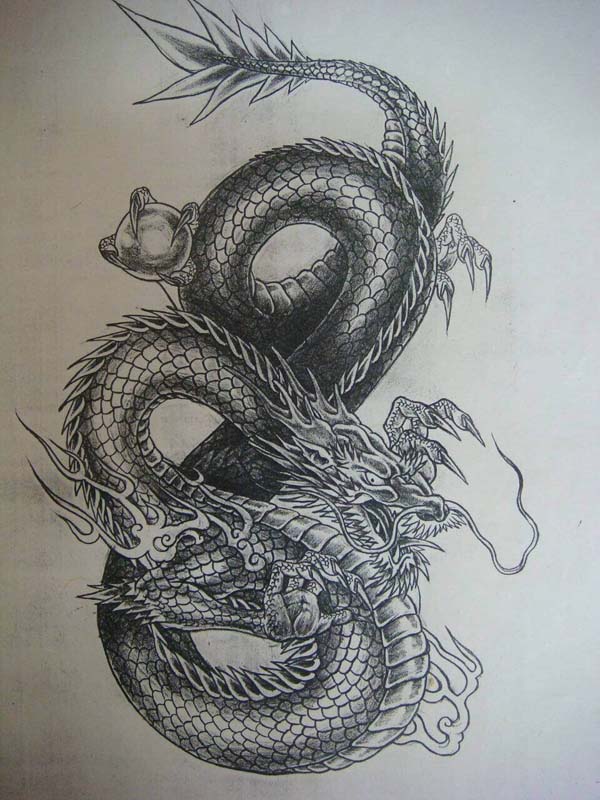
2. Phoenix (凤凰 – fènghuáng): The phoenix is a mythical bird that symbolizes rebirth, renewal, and immortality. It is often depicted with vibrant plumage and represents beauty, grace, and harmony. Phoenix tattoos convey themes of resilience, transformation, and overcoming adversity.
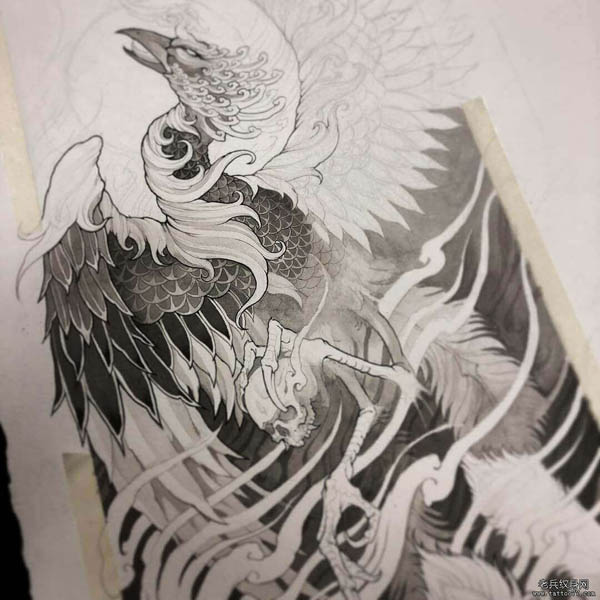
3. Tigers (虎 – hǔ): Tigers hold a prominent place in Chinese symbolism, representing courage, strength, and protection. Tiger tattoos symbolize bravery, ferocity, and dominance. They are also associated with qualities of loyalty, independence, and determination.
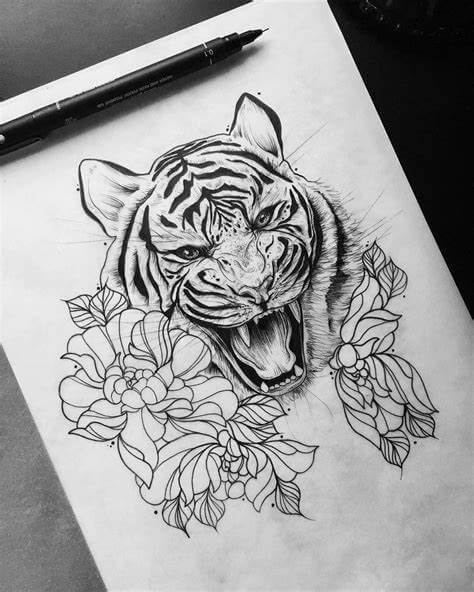
4. Lotus Flower (莲花 – liánhuā): The lotus flower is a significant symbol in Chinese culture, representing purity, enlightenment, and spiritual growth. Despite growing in muddy waters, the lotus emerges pristine and beautiful, symbolizing the journey towards enlightenment and inner peace. Lotus tattoos convey themes of resilience, purity, and personal growth.
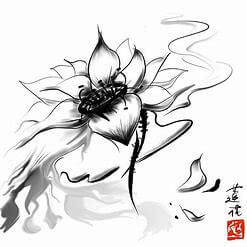
5. Koi Fish (锦鲤 – jǐnlǐ): Koi fish are highly regarded in Chinese symbolism for their beauty, strength, and perseverance. Legend has it that koi fish have the ability to transform into dragons, symbolizing ambition, determination, and success. Koi fish tattoos represent overcoming adversity, achieving goals, and prosperity.
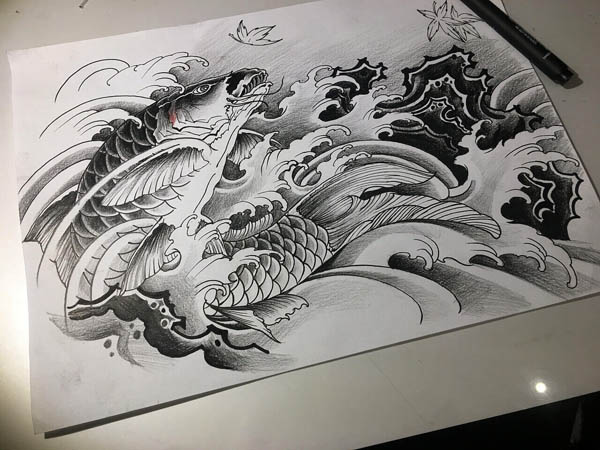
6. Chinese Characters and Calligraphy (汉字和书法 – hànzì hé shūfǎ): Chinese characters and calligraphy are often incorporated into tattoos to convey meaningful words, phrases, or sentiments. Each character carries its own significance and can represent virtues, blessings, or personal mantras. Common choices include words like “love” (爱), “strength” (力量), “harmony” (和谐), and “fortune” (福).
7. Yin and Yang (阴阳 – yīn yáng): The concept of Yin and Yang is fundamental to Chinese philosophy, representing the duality and balance of opposing forces in the universe. Yin symbolizes the passive, feminine, and receptive aspects, while Yang represents the active, masculine, and assertive aspects. Yin and Yang tattoos symbolize harmony, balance, and the interconnectedness of all things.
These symbols are just a few examples of the rich cultural symbolism and meanings behind Chinese tattoos. Each design carries its own significance and personal interpretation, serving as a powerful expression of identity, culture, and personal journey.
Chinese People’s Changing Attitudes Towards Tattoos
Chinese attitudes towards tattoos have experienced a significant transformation over the years, reflecting shifts in societal values, cultural influences, and generational perspectives. Traditionally, tattoos were often associated with criminality, rebellion, or social deviance, leading to a stigma surrounding body art in Chinese society. However, in recent decades, attitudes have gradually evolved, driven by several key factors:
- Cultural Exchange and Globalization: Increased exposure to Western culture through globalization, international travel, and the internet has played a significant role in changing perceptions of tattoos among Chinese people. Western media, celebrities, and pop culture icons who proudly display tattoos have helped normalize body art and challenge traditional stereotypes associated with it.
- Youth Culture and Self-Expression: Chinese youth, in particular, have embraced tattoos as a form of self-expression, individuality, and rebellion against societal norms. For many young people, tattoos serve as a means of asserting their identity, expressing their creativity, and distinguishing themselves from previous generations. Social media platforms have also played a crucial role in popularizing tattoos among Chinese youth, providing a space for sharing tattoo designs, experiences, and inspirations.
- Artistic Appreciation and Aesthetic Trends: As perceptions of tattoos have shifted, there has been a growing appreciation for the artistic and aesthetic aspects of body art in Chinese society. Tattoo artists are increasingly recognized as skilled artisans, and tattoos are viewed as legitimate forms of art and self-expression. This has led to a burgeoning tattoo culture in urban centers across China, with an increasing number of tattoo parlors and a diverse range of styles and designs.
- Changing Social Norms and Acceptance: Over time, there has been a gradual acceptance of tattoos in mainstream Chinese society, particularly among younger generations. While tattoos may still carry some stigma, they are no longer automatically associated with criminality or deviance. Instead, they are increasingly seen as a personal choice and a form of adornment, much like jewelry or fashion accessories.
- Professional Considerations and Workplace Culture: Despite changing attitudes, there are still practical considerations for individuals with tattoos, particularly in professional settings. Some employers may have strict dress codes or conservative attitudes towards visible tattoos, which can impact career prospects or social acceptance. As a result, individuals may choose to conceal their tattoos or opt for placements that can be easily covered in professional environments.
In summary, Chinese attitudes towards tattoos have undergone a significant evolution, from stigma and taboo to greater acceptance and appreciation. While traditional perceptions may still linger in some quarters, especially among older generations, tattoos have become increasingly mainstream and culturally relevant in contemporary Chinese society, reflecting broader shifts in social norms, cultural influences, and generational values
The Most Famous Tattoo in Chinese History
One of the most famous tattoos in Chinese history belongs to the legendary general Yue Fei (岳飞). Yue Fei was a military leader and national hero during the Southern Song Dynasty (1127–1279). He is celebrated for his loyalty, patriotism, and unwavering dedication to his country.
Yue Fei’s most famous tattoo is the four Chinese characters “精忠报国” (jīng zhōng bào guó), which translate to “loyalty and patriotism” or “serve the country with the utmost loyalty.” According to legend, these characters were tattooed onto his back by his mother before he left home to join the military. The tattoo served as a constant reminder of his duty to his country and his determination to defend it against invaders.
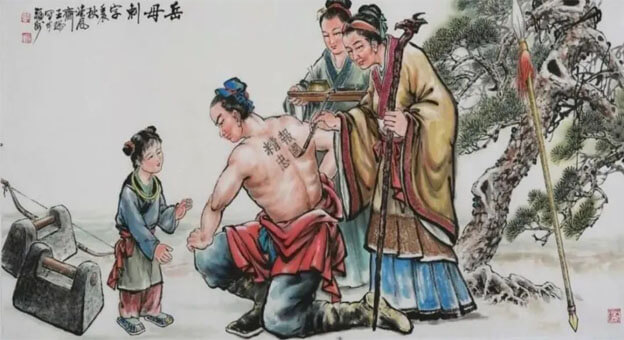
Yue Fei’s loyalty to the Southern Song Dynasty was unwavering, and he played a crucial role in resisting the incursions of the Jurchen-led Jin Dynasty. He led his troops in several successful military campaigns, reclaiming lost territories and rallying the people against the Jin invaders.
Despite his military successes, Yue Fei faced political intrigue and betrayal from within the Song court. He was falsely accused of treason and executed in 1142 at the age of 39. However, his legacy lived on as a symbol of loyalty, patriotism, and righteous resistance against tyranny.
The story of Yue Fei and his famous tattoo has been immortalized in Chinese folklore, literature, and popular culture. His image is often depicted in art, literature, and media as a symbol of courage, integrity, and national pride. The four characters of “精忠报国” have become iconic, representing the enduring values of loyalty and patriotism in Chinese history and culture.
In essence, tattoos in Chinese culture serve as living testaments to the intricate interplay between tradition and modernity, collective memory and individual expression. As China continues to undergo profound social, economic, and cultural transformations, tattoos serve as poignant reflections of identity, belonging, and the enduring quest for meaning in an ever-changing world. Through their inked narratives, tattoos in Chinese culture bridge the past with the present, weaving threads of heritage into the fabric of contemporary life.

